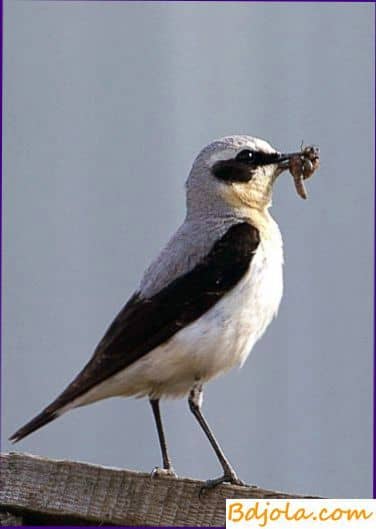
Shrikes are found in many species. The most common of them is the gray shrike shrimp (Lanius excubitor), 27 cm in length, destroying bees. The back of the male is ashen-gray, the shoulders and belly are white, the wings and tail are black on top. The female is less brightly colored.
Red shrike, or roan (Lanius collurio), about 20 cm long. The male back and shoulders are reddish-red, the rest of the upper side is bluish-gray, the underside is white, with a reddish tinge. In the female, the back is reddish-brown, the belly yellowish-brown, with brown strips.
The red-headed shrike (Lanius senator) is 18 cm long. The head of the male is reddish-red, the back, wings and tail are black, white spots on the wings and on the shoulders; belly white, with a rusty hue. The plumage of the female is paler than that of the male.
Black-legged shrike (Lanius minor) up to 24 cm long. The male has an ashen-gray back, a belly with a pink hue, wings are black with a white spot. The feathering of the female is pale.
All the shrouds are very greedy. Settling near apiaries, they are very harmful to bees. Are widespread everywhere.
Measures against the shrike are the destruction and deterrence of their rifle shots.
Соевая мука для подкормки. Улей лежак и работа с ним.
Predator bees